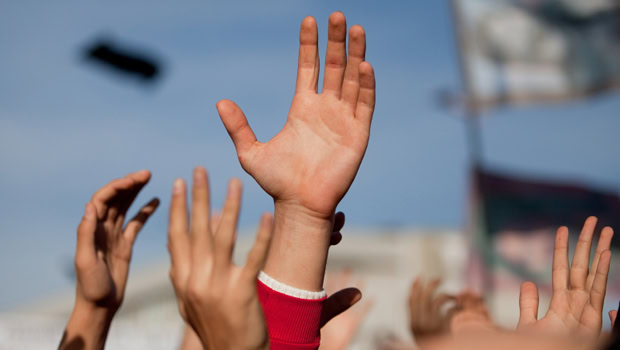Treating T1 Diabetes During Disasters

Last November, the most intense tropical storm in documented history hit the Philippines, leaving hundreds of thousands of people homeless. For disaster relief groups, getting people food, water, and shelter after such a disaster isn’t easy. It’s exponentially more tricky to help those with chronic diseases like Type 1 diabetes, says Carol Atkinson, a U.S. program coordinator for Insulin for Life, an international non-profit that collects and distributes diabetes supplies for people in developing countries.
“It’s a very complex endeavor. Insulin should be maintained at a constant temperature. If it freezes, it dies. If it gets too warm, it loses potency. This makes shipping insulin very costly. And at the other end, there’s always the issue of how it will be stored if refrigeration isn’t an option,” Atkinson says.
Insulin for Life donated supplies that are now being distributed in typhoon-affected Cebu City in the Philippines. The organization had to get creative to make the supplies stretch.
“There were not enough vials to provide to each patient, so patients have to show up at a designated place each day to receive their insulin,” says Atkinson.
Of course, extreme weather is not the only barrier to good diabetes management for T1 people in the developing world. War and civil unrest can choke a country’s medical supply chain and make test strips and insulin scarce. Recently, Twitter was filled with images of Venezuelans with diabetes holding up signs appealing for insulin during that country’s political turmoil. At least one Venezuelan with T1 said he hadn’t been able to find insulin for over a week. In the civil war in Syria, international aid organizations are warning that scores of children are dying from treatable conditions, including diabetes.
War also creates a brain drain of medical professionals who can treat diabetes. The World Health Organization reported that 36% of Syria’s public hospitals are out of service because of the country’s ongoing civil war. Production and importation of medicine have been all but obliterated, and medical workers are at grave risk if suspected of treating rebels. In March 2013, the New York Times reported that more than 100 physicians have been killed and hundreds more have disappeared into Syrian jails. Many more have fled the country with their families.
While natural disasters and war grab the headlines, poverty may be the toughest barrier to good diabetes care for people with T1 diabetes in developing countries, says Dr. Gojka Roglic, a diabetes expert with the World Health Organization. Addressing this issue is no quick fix. It requires helping governments create systemic change and find sustainable solutions to improve access to all essential lifelong medication, she says.
“In many low-income and middle-income countries, there is a chronic problem with access to insulin,” Dr. Roglic says. “The reasons are complex, including low resources, almost non-existent production of generic insulin, faulty procurement, health policy, (and) competing health priorities.”

for insulin, which he hasn’t been able
to find for 3 weeks because of a failing
economy and a conflict between protestors
and the government.
Luckily, there are some rays of hope on this front. The International Insulin Foundation launched its “100 Campaign” last year, with a mission to ensure that 100% of people with Type 1 diabetes have access to insulin by 2022. Last December, the Delhi Diabetic Research Center in India also announced it would provide insulin free of cost to 150 T1 children in the poorer parts of the city. The World Diabetes Foundation is trying to raise awareness and capacity to alleviate suffering in developing nations. To date, the organization has funded 336 projects in 108 countries, with more than half being ongoing project partnerships. It has helped facilitate access to diabetes treatment and care in places like Mali, Sudan, the West Bank, and the Gaza Strip.
Still, there is so much more that needs to be done to combat a health problem that is so undertreated that it’s hard to know how many people need help, says Jamal Butt, a spokesman for the World Diabetes Foundation in Denmark.
“The life expectancy for a child diagnosed with Type 1 diabetes is less than one year in some countries, and many children die from diabetes without ever being diagnosed,” Butt says. “The majority of these premature deaths could be avoided with access to proper care and treatment.”
And few governments are trained in reaching and treating people with specific diseases during crises. Much of the important work falls on the shoulders of often understaffed and underfunded non-profits. Successful aid organizations often must find a way to circumvent official red tape and governmental corruption to provide needed services in dangerous conditions.
Atkinson says the key to meeting the needs of people with diabetes in countries in chaos is creating lasting partnerships that support local health organizations already on the ground. That’s how Insulin for Life was able to send a substantial supply of insulin, syringes, glucose test strips, and meters to the Democratic Republic of the Congo, despite a brutal and long war that has claimed the lives of millions.
“It’s one thing to donate after disaster strikes but a better alternative, at least for the work we do, is to preemptively support organizations,” Atkinson says. “That can mean the difference between life and death.”
How You Can Help:
There are several organizations that work to provide diabetes supplies to those without it in the developing world, including:
-Insulin for Life USA
-The International Insulin Foundation
-The World Diabetes Foundation
Consider making a donation or volunteering your time today to save the lives of T1 folks in other countries!
Thanks for reading this Insulin Nation article. Want more Type 1 news? Subscribe here.
Have Type 2 diabetes or know someone who does? Try Type 2 Nation, our sister publication.